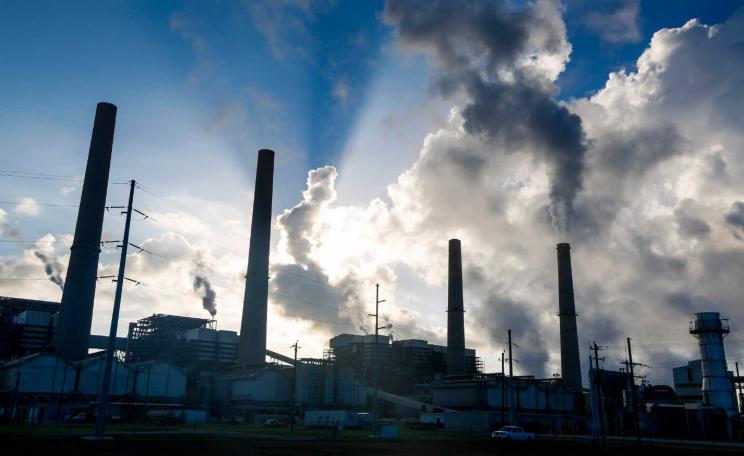While geoengineering could be an effective tool to prevent sea-ice collapse, the researchers say that reducing greenhouse gases is still the most vital part of the fight against climate change
Geoengineering is a concept that can raise some eyebrows. Environmental scientists either love it or loathe it, and the application of large-scale engineered solutions to environmental problems have so far proven largely unpredictable – nature doesn’t always respond the way scientists expect.
Nevertheless, geoengineering still offers what other branches of science don’t – large-scale potential solutions to global climate system problems. In this case, that problem is sea-level rise, which is influenced by glacial sea-ice melt.
Even if we hit all the targets of the Paris Agreement, sea level will still increase because the heat caused by global warming to date can be stored in water for much longer than in air. Warm water will heat the bottoms of ice shelves, which will cause more sea-ice melt, which will contribute to sea-level rise.
Thinking the unthinkable
As Professor Jonathan Bamber, president of the European Geosciences Union, said: “Present-day sea level rise is about 3mm a year and it keeps accelerating. Even if we cut greenhouse gas emissions to zero tomorrow, we’re committed to some sea level rise, because of inertia in the oceans, glaciers, ice caps and the whole climate system.”
Lead researchers Michael Wolovick and John Moore decided to investigate the potential for glacial geoengineering to prevent sea-ice melt. Moore, a scientist at Beijing Normal University China and a professor of climate change at the University of Lapland, Finland, said: “Doing geoengineering means often considering the unthinkable.”
The team examined two methods – the first was to build walls underwater, blocking warm water from reaching the ice shelf’s base and melting it, and the second approach involved constructing artificial mounds on the seafloor to prop up the glacier, and help it to regrow.
While geoengineering could be an effective tool to prevent sea-ice collapse, the researchers say that reducing greenhouse gases is still the most vital part of the fight against climate change
The researchers conducted the study with computer models, and based their modelling on the Thwaites glacier, which is projected to be the largest individual source of future sea-level rise. The idea was that by basing their study on one of the most challenging glaciers in the world, the researchers could reasonably expect it to work on most others.
Their results have been astonishingly encouraging – they found that a small underwater wall blocking about half of all warm water from reaching the ice shelf base was 70 percent likely to succeed, and large walls would be even more likely to delay or even stop ice-sheet collapse completely.
Diverse consequences
Even the smallest intervention tested - the building of isolated 300-metre-high mounds or columns on the seafloor, had a 30 percent probability of preventing a runaway collapse of the Western Antarctic Ice Sheet for the foreseeable future, according to the models.
Although the wall is more effective, other constraints could mean that the mounds are more practical in some instances, according to Moore. He said: “There is a trade off in the 2 designs, the long wall is more likely to succeed in stopping ice sheet collapse than the simple pinning points. But it requires a much larger volume of material to construct, so it’s much more difficult, and presumably a higher risk of potential accidents during construction."
While geoengineering could be an effective tool to prevent sea-ice collapse, the researchers say that reducing greenhouse gases is still the most vital part of the fight against climate change. The solution proposed by the team would limit sea-level rise caused by glacial ice melt, but would not have an effect on other harmful consequences of climate change, such as ocean acidification, floods, droughts and heat waves.
In the past, scientists have tried out geoengineering solutions that have affected the ecological balance and the environment around, but it is unlikely that the glacial walls will have those kinds of effects. In any case, glacial ice collapse is likely to cause even more disruption to ecosystems and the environment, according to Moore. More analysis is needed, but it is likely that the impacts would probably be localised because the aim would be to preserve the glaciers as close to their current form as possible.
Moor said: “This is quite different from ideas such as iron fertilization or stratospheric aerosol injection which add new material and reactions to the global environmental system. If the glacier collapses - which it is very likely to do under greenhouse gas warming - then the local changes in oceanic environment and ecology would be far greater, as also would be the global consequences from the rising seas affecting coastal wetlands, agriculture and cities.”
This Author
Catherine Collins writes on marine and environmental issues. She has a BSc in marine science and an MA in journalism. You can read more of her work here.




